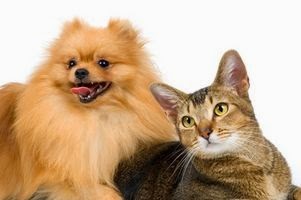 |
| Dog Illnesses |
Since prevention is a better cure, we must learn something about dog illnesses and symptoms so we can better understand their conditions. This will help us recognize some common dog illnesses. If appropriate and adequate vaccinations are administered to the puppies, most of the common dog illnesses can be easily prevented.
 |
| Dog Illnesses |
The appetite of the dog is bound to be affected by ill health. Look for any signs of loss of appetite. An important sign of dog health problems is excessive thirst. A pronounced weight loss is also an indicator of ill health. Check the eyes for any ulcers, discharges, veins or sores.
The mouth of a healthy dog is pink. There should not be any discoloring or cavities in the teeth. Look for signs of discharge from ears. It is advisable to clean the ears from time to time. The dog's head should be regularly checked for sore patches, hair loss, or deep wounds.
Investigate the limbs and trunk for the same signs. If the dog is vomiting, there may be various underlying problems. If the body temperature of your dog is not between the range 38 to 39 Celsius it is an indication of some kind of illness. Check the female dogs for any kind of foul smelling vaginal discharge, which needs attention of a vet.
The symptoms of pain and discomfort experienced by a dog can give us many clues about the possible underlying illness. If the dog is suffering any abdominal pain, it may be due to canine hepatitis, enteritis or it can be a simple case of constipation. The abdominal swelling dogs indicate canine bloat and roundworms in puppies. Aggression of the dog may be caused by rabies. Roundworms, tapeworms, and whipworms my cause anemia in dogs. Any behavioral changes in dog can be an indicator of hookworms, tapeworms, whipworms, canine arthritis, heart disease, canine, or parvovirus.
Kidney diseases sometimes cause blood in urine. Eye infections and entropion cause bloodshot eyes in dogs. A ruptured diaphragm, obstructed airway, lungworm, bronchitis, pneumonia, food poisoning, heatstroke, allergies can cause respiratory problems in dogs.
There are various reasons of sudden change in weight of dogs like heart disease to heartworms. Hernia might be caused due to long term constipation in dogs. Allergies, parvovirus, hepatitis, lungworm, TB, pneumonia or distemper may be one of the reasons of coughing in dogs. Cannine parvovirus can also cause dehydration in dogs. Any pancreatic disorder, food poisoning can give rise to diarrhea in dogs. The dog may suffer from hair loss due to mange, red mange demodectic, scabies, cheyletiella mange, or cushings syndrome.
If dog indicates any signs of failing genital bleeding, persistent constipation, projectile vomiting, fainting, hair loss, seizure, stumbling, trauma, trembling, mouth bleeding, rectal bleeding, lethargy, shaking, urinating problems contact a dog care specialist.










